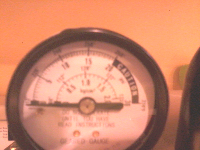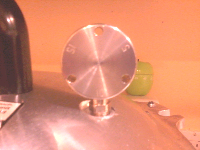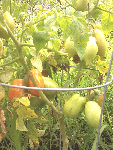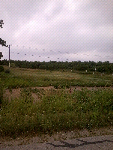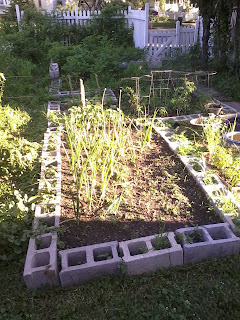If you've read my blog for any length of time you know I like to buy local- surprise! I was recently surprised by my bank statement, which basically said that we like to go out to eat a lot more than I thought. If you haven't yet noticed, it's a lot most cost-effective to make meals at home than it is to go out to eat. Hence the doubling-back to the eternal question of a budget-conscious locavore:
"How do I eat in a local-as-possible, healthful, sustainable way without going broke?" This is not only a help for you (hopefully) but a reminder for me as well :) We're all in tough economical situations right now- thinking more thoughtfully about what we eat and where we spend our money can only be helpful!
Luckily, there are a variety of local food resources very close to me, and most likely to you as well. I'd like to share some of my ideas and techniques, in hopes that others out there may be able to use them as well. And hey!- if you have ideas, please comment and share them with me!
This is part of a larger, three-day, three-part series on my blog, so check back in tomorrow & Friday!
Economical Local Eating- Part 1: Knowing Your Food Sources
If you've started to eat locally already, you've probably gotten to the point where you're starting to know where to spend the big bucks, where to scrimp and save, and what grocery locations you need to frequent to get the best deals. In a world where actual food production and nutrition information is practically hidden from the consumer, it takes some effort to seek out locally-grown foods that are healthy and don't cost you and arm and a leg!
Part of becoming an informed, aware consumer in this crazy land of ours is doing your homework. Since I've done a lot of proverbial homework in regards to shopping local, let me help you!
There are several larger points that help to make up my Shopping Manifesto-
Guiding Rules to Shopping Locally while on a Budget:
- Shop often
- Have Meals in Mind
- Have Ingredients on-hand
"Shop Often" means-
When you begin purchasing fresh veggies, you'll notice that they don't always have a shelf-life of 14 days like those good old ones from your Big Box Store do. There's a reason for that- they're FRESH! If it's time visiting a Farmers' Market, it's easy get carried away by the bountiful, beautiful produce, and spend $40 on fruits and veggies, only to take them home where many of them will rot before you get to eat them (if you don't have a plan, that is)! If you're shopping for 3 people, don't buy enough for 3 people for the next 15 days! The nice thing about local shopping options is just that- they're local! Many times they are close, convenient, and fresh: you don't have to buy all the months' veggies in one trip and you probably shouldn't.
"Have Meals in Mind" means-
One of the best way I find to save money on a long-term basis when I shop is to know what I plan to cook! I don't, by any means, have each day planned out, but I do keep in mind some of the core dishes I'd like to make that week- maybe it's a soup or a veggie stir-fry. Maybe it's some kind of vegetable bake. Whatever it is, I aim to get ingredients for meals, not just random products that look good. This also prevents me from buying a lot of processed crap- if you have dinners in mind, you don't need to buy frozen food or pre-made meals. Then you can have more control of what goes into your food and therefore into your body!
"Have Ingredients on Hand" means-
This comes right from my mother, the main grocery-purchaser of our household growing up. Teenage me would always look into the pantry and then cry, "Mom, we don't have any food!"Usually her reply was, "Yes, but we have ingredients!" I always thought that was an annoying response, and didn't really understand what difference it made. Now that I'm older, and living with a teenager who has the potential to be crying the same thing, I know what my mom means: Always keep "staple items" in stock in your home. These could be different for each family: Beans and Rice, Soup Stock, Chicken, greens for salad.. depends on what your go-to meals are. But when you reach into that pantry to try to make your budget stretch, you want to have those key things on hand! My staples are probably soup stock, vegetables, bread, and lunch meat. I can always make some kind of weird concoction if I have soup stock and some veggies to throw in. Bread is important for quick breakfasts on the go, as well as a key ingredient in sandwiches, which are a frequently-consumed item by two of the three people in our home. Lunch meat is pretty self-explanatory, I hope?
Where to Shop:
 Farmers' Markets-
Farmers' Markets- Shopping at one of the many local markets here is always my top choice- I get to speak with the farmers that grow my food, and I just don't think there's any substitute for that, except growing your own food! Most of the produce I don't grow myself is purchased from local farmers. You can find quite a variety of produce at your local Farmers' Market, from sweet potatoes to eggplant- one of our urban gardeners at the market even had paw-paw fruit for sale! Also a good way to get items for the home- I get my
bar soap from the market, as well as homemade laundry detergent and cloth-made snack packs and
sandwich wraps!
Find your local Farmers' Market.
CSAs- CSA stands for "Community Support Agriculture", and is kind of akin to investing in a farmer. You pay for a share or a half share ahead of time (usually in the winter or early spring), which allows the farmers some capital to do the things they need to do on the farm. The share is a certain amount of weeks long (could be 16, could be 22), and you commit to pick up your share from your farm, or from a local pick-up point. Only downside to this in my opinion, which is also a positive, is that you don't pick what is in your "share" each week- you can get an idea of what might be there but you can't pick and choose. Gotta learn to love new veggies! There are vegetables CSAs, meat CSAs, and more, so
find one for yourself today!
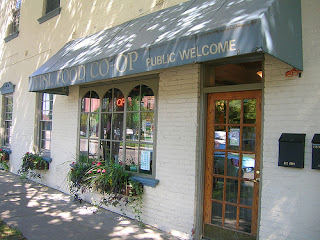 Food Co-ops-
Food Co-ops- Great way to shop locally and still get the essentials you need. Our local Ypsilanti Food Co-op is my Go-To location for bulk goods like flour, sugar, beans, rice, oats. I am always thrilled to find that many of those bulk items are made in my state of Michigan, which is just awesome! Buying in bulk can save you money, and is a nice way to save the environment as well- by bringing the empty containers I plan to fill with flour, sugar, etc. I am not using up any extra paper, plastic, etc. I also get most of my "home goods" at our Co-op: eco-friendly dish detergent, soap, recycled paper towels & toilet paper, shampoo and body wash, and they have body/eco-friendly tampons too (although I am a moon cup user myself)! Some Co-ops require membership and some do not- our particular one does not require you be a member to shop there, although if you do join as a member ($25/year) you get 2% off your purchases and get to have a vote at a variety of meetings and decision-making sessions.
Find a Co-op near you!
Farm Stands- Similar concept to Farmers' Market and CSAs- some farms operate their own Farm Stand as a way of selling the produce they grow. There are usually set hours these farms stands are open, and you drive on by and purchase what you need- like a CSA with the convenience of a Farmers' Market experience! Nice way to see the farm you're supporting, and to really connect with one family/farmer.
Action Step:
Now that we've covered some basics, check out these great resources to do your own research:
Find a Co-op, Farm Stand, Farmers' Market or CSA near you and try it out!
Tomorrow we'll be exploring Prioritizing your Purchases, and Friday will be focused on Recipes and Food Prep to Stretch your Budget





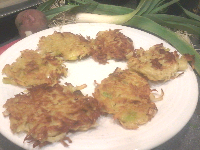





 Right now, I am doing one of my favorite things; focusing another Crazed Project! I've mentioned this tendency in recent posts- my love of taking on a potentially out-of-reach project and being obsessed with it until I can make it a reality :) The new project on my mind recently has been growing some produce for the market garden co-op!
Right now, I am doing one of my favorite things; focusing another Crazed Project! I've mentioned this tendency in recent posts- my love of taking on a potentially out-of-reach project and being obsessed with it until I can make it a reality :) The new project on my mind recently has been growing some produce for the market garden co-op!

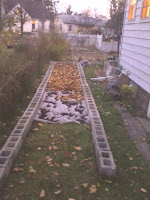



 Farmers' Markets- Shopping at one of the many local markets here is always my top choice- I get to speak with the farmers that grow my food, and I just don't think there's any substitute for that, except growing your own food! Most of the produce I don't grow myself is purchased from local farmers. You can find quite a variety of produce at your local Farmers' Market, from sweet potatoes to eggplant- one of our urban gardeners at the market even had paw-paw fruit for sale! Also a good way to get items for the home- I get my bar soap from the market, as well as homemade laundry detergent and cloth-made snack packs and sandwich wraps! Find your local Farmers' Market.
Farmers' Markets- Shopping at one of the many local markets here is always my top choice- I get to speak with the farmers that grow my food, and I just don't think there's any substitute for that, except growing your own food! Most of the produce I don't grow myself is purchased from local farmers. You can find quite a variety of produce at your local Farmers' Market, from sweet potatoes to eggplant- one of our urban gardeners at the market even had paw-paw fruit for sale! Also a good way to get items for the home- I get my bar soap from the market, as well as homemade laundry detergent and cloth-made snack packs and sandwich wraps! Find your local Farmers' Market.



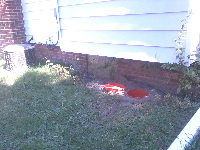


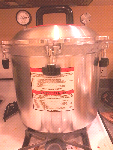 Q) What is the difference between a pressure canner and a water bath/boiling water canner?
Q) What is the difference between a pressure canner and a water bath/boiling water canner?